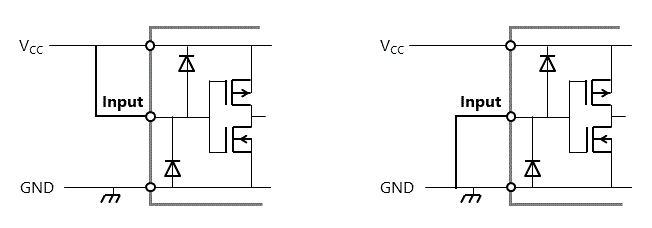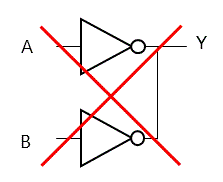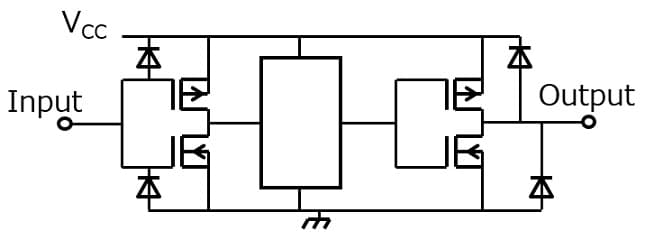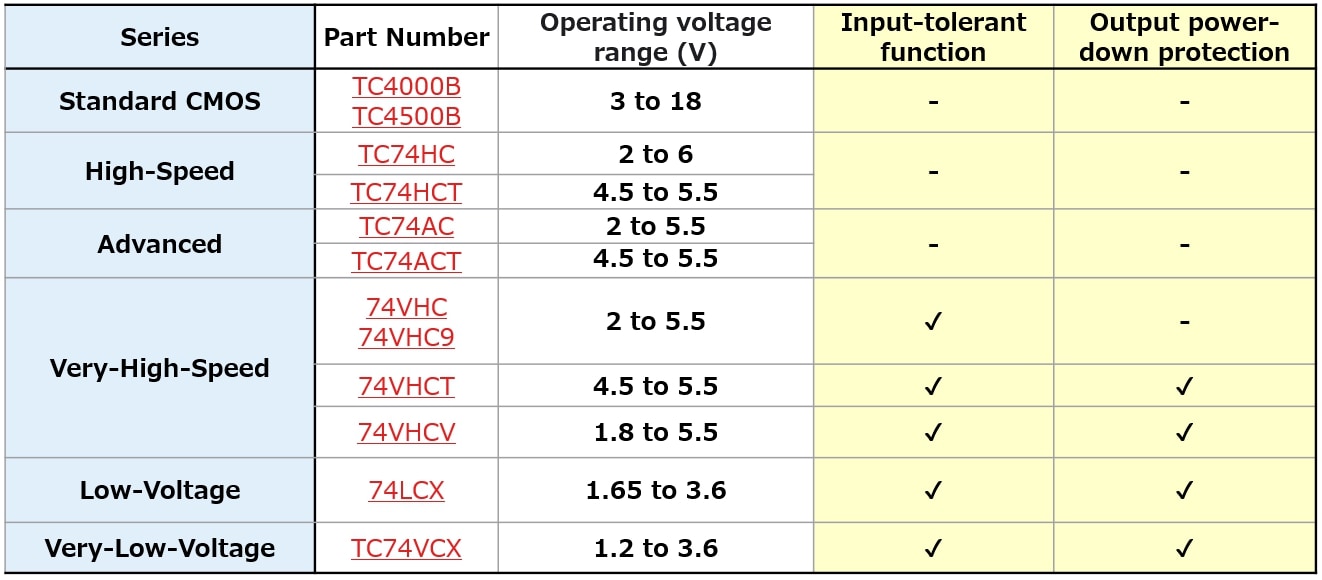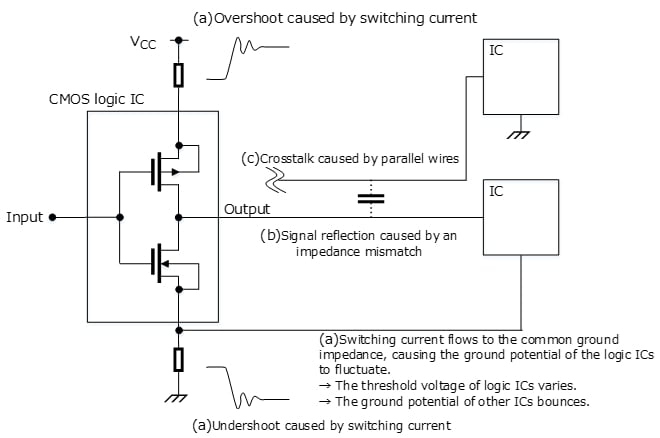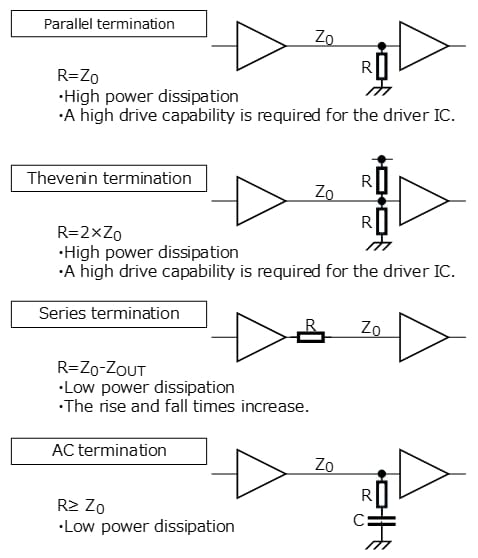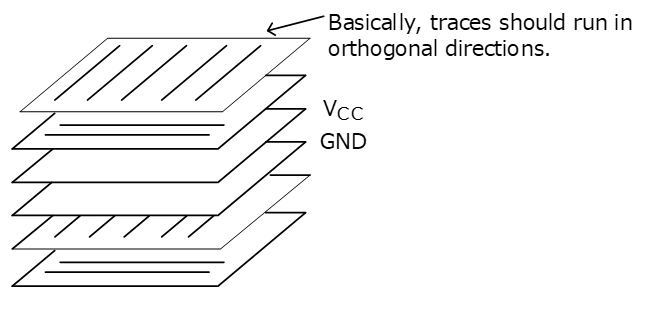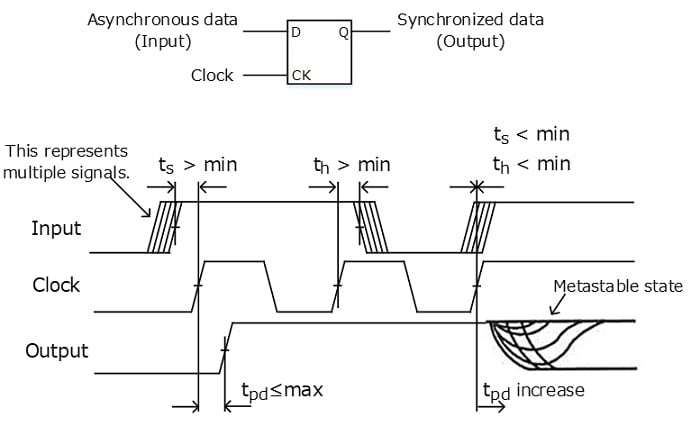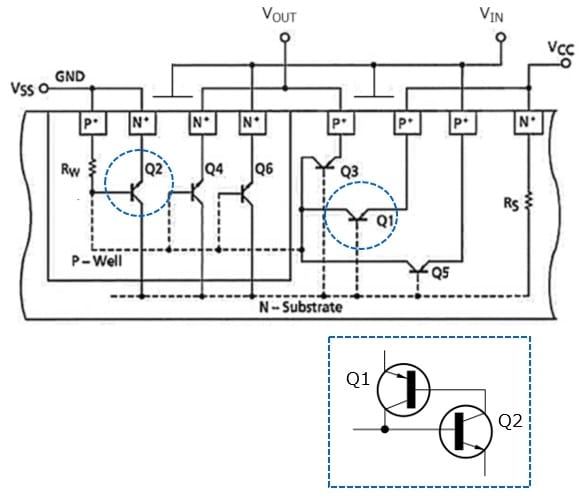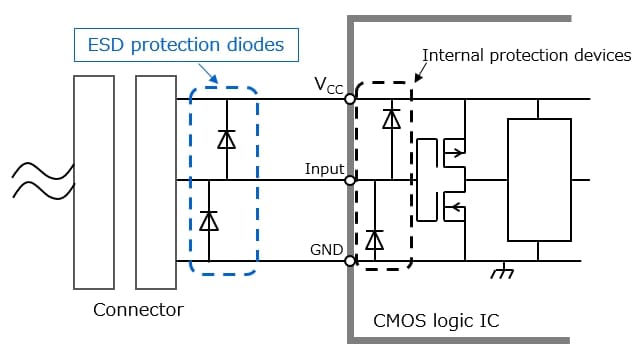-
My ToshibaSemicon
- 반도체 탑
-
애플리케이션Automotive
Body Electronics
xEV
In-Vehicle Infotainment
Advanced Driver-Assistance Systems (ADAS)
Chassis
IndustrialInfrastructure
BEMS/HEMS
Factory Automation
Commercial Equipment
Consumer/PersonalIoT Equipment
Healthcare
Wearable Device
Mobile
Computer Peripherals
-
제품자동차 디바이스
Discrete Semiconductor
다이오드
트랜지스터
로직 IC
Analog Devices
Digital Devices
Wireless Devices
※
: Products list (parametric search)
파워반도체※
: Products list (parametric search)
Isolators/Solid State RelaysPhotocouplers
Digital Isolators
Solid State Relays
Fiber Optic Transmitting Modules
※
: Products list (parametric search)
MOSFETsIGBTs/IEGTs바이폴라 트랜지스터※
: Products list (parametric search)
다이오드※
: Products list (parametric search)
마이크로컨트롤러모터 드라이버 ICIntelligent Power ICs※
: Products list (parametric search)
전원관리IC리니어 IC※
: Products list (parametric search)
범용로직IC리니어 이미지 센서기타 제품용 IC기타 제품용 IC
※
: Products list (parametric search)
-
개발/설계 지원
-
기술 자료
- 구매처
- 부품 번호 & 키워드 검색
- 상호 참조 검색
- 파라미터 검색
- 재고 확인 및 구매
This webpage doesn't work with Internet Explorer. Please use the latest version of Google Chrome, Microsoft Edge, Mozilla Firefox or Safari.
3글자 이상 입력하세요. Search for multiple part numbers fromhere.
The information presented in this cross reference is based on TOSHIBA's selection criteria and should be treated as a suggestion only. Please carefully review the latest versions of all relevant information on the TOSHIBA products, including without limitation data sheets and validate all operating parameters of the TOSHIBA products to ensure that the suggested TOSHIBA products are truly compatible with your design and application.Please note that this cross reference is based on TOSHIBA's estimate of compatibility with other manufacturers' products, based on other manufacturers' published data, at the time the data was collected.TOSHIBA is not responsible for any incorrect or incomplete information. Information is subject to change at any time without notice.
3글자 이상 입력하세요.
Calculating the Operating Supply Current and Power Dissipation
Calculating the power dissipation of a CMOS logic IC
Power dissipation should be calculated from both of the following:
- Static supply current
- Dynamic supply current
Power can be obtained by multiplying current by the voltage applied to an IC.
Static power dissipation: PS
While CMOS logic is in a static state (i.e., while its input voltage remains almost unchanged), little current flows in it except tiny leakage current that flows across the internal reverse-biased pn junction (known as static supply current, ICC). Static power dissipation is ICC multiplied by the supply voltage.
PS = VCC x ICC
VCC: Voltage applied to a logic IC
ICC: Static supply current shown in the datasheet
Dynamic power dissipation: PL+PPD
Dynamic supply current is the current that flows in CMOS logic ICs while its input transitions between High and Low. This current flows during the charging and discharging of capacitance. It is necessary to consider both parasitic capacitance (internal equivalent capacitance) and load capacitance.
Dynamic power dissipation is dynamic supply current multiplied by the voltage applied to the p-channel or n-channel MOSFET.
For the sake of simplicity, the following calculation assumes that this voltage is equal to VCC at which dynamic supply current becomes the maximum.
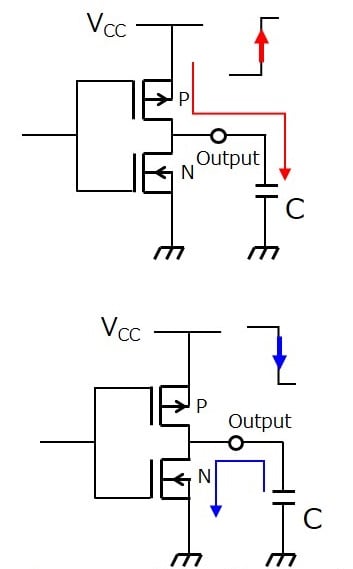
Dynamic power dissipation due to load capacitance (CL): PL
PL means power dissipation when an external load is charged and discharged as shown by the right-hand figure.
The amount of charge (QL) stored on the load capacitance is calculated as follows:
QL = CL * VCC
CL: Load capacitance
Let the output signal frequency be fOUT (= 1/TOUT). Then, the average current (IL) is expressed as follows:
IL = QL / T = CL * VCC * fOUT
Hence, dynamic power dissipation (PL) is:
PL = VCC * IL = CL * VCC^2 * fOUT
If an IC has multiple outputs, its dynamic power dissipation can be calculated as follows:
PL = VCC^2 * Σ (CLn* fOUTn)
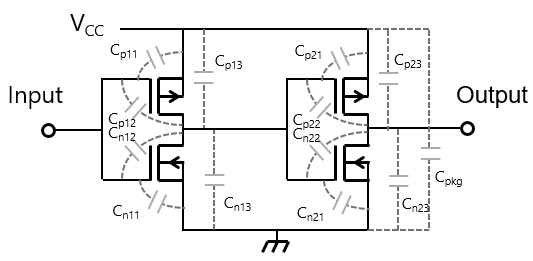
Dynamic power dissipation due to internal equivalent capacitance (CPD): PPD
CMOS logic ICs have various parasitic capacitances as shown by the right-hand figure. These capacitances are equivalently expressed as CPD. (Actually, CPD is calculated from power dissipation at relatively high frequency (1 MHz) under a zero-load condition.)
PPD is the power dissipated by the equivalent capacitance of an IC and can be considered in the same manner as PL.
Note, however, that PPD is calculated at input frequency (fIN):
PPD = VCC * IL = CPD * VCC^2 * fIN
Total power dissipation (PTTL) can be obtained as the sum of static power dissipation (PS) and dynamic power dissipation (PL + PPD):
PTTL= PS + PL + PPD
Usage Considerations of CMOS Logic ICs
Products
Related information
- Application Notes
- FAQ


